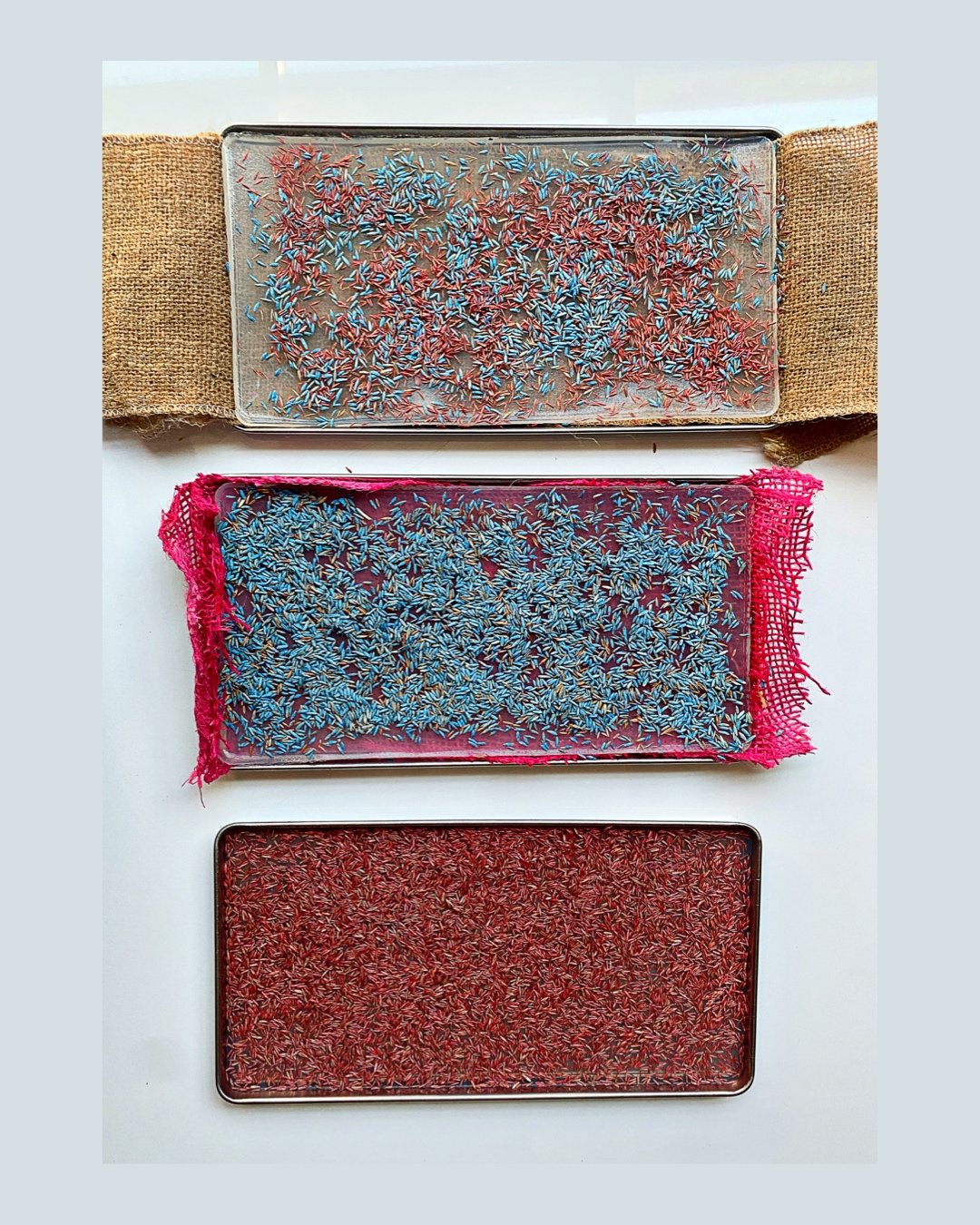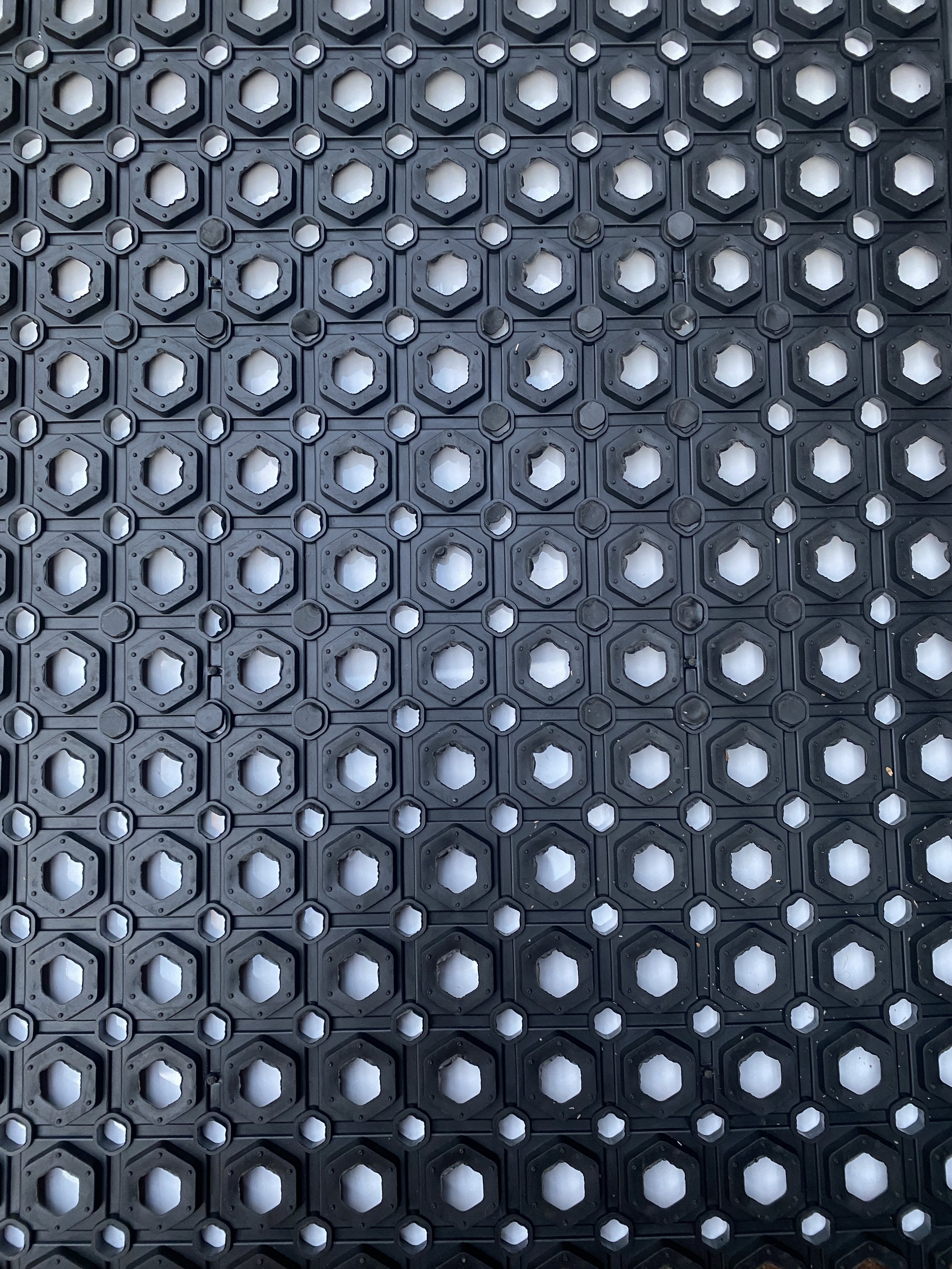Root System Substrate
Initial thoughts were to make some oozy bioplastic pods or forms of some sort that are suspended or on the ground - connected with tendrils of some sorts dragging along the floor, in these puddles of moisture which have been expressed by the bioplastic. This may very well change, likely will … but ideas all have that starting point.
I feel I need something to work with the bioplastic - a substrate. Nothing really has been connecting for me or feels like a harmonious match. I have emailed Keel Labs several times about purchasing some Kelsun fibre (algae based thread) but they haven’t bothered to reply. Went onto thinking about other natural fibres I could use (cottons, wool, coconut fibre, flax, etc.) but they seem so ho hum and manufactured. I recalled seeing something done with roots which had piqued my interest so began researching that. If water is a big part of creating interconnectedness then root systems seem to work with that. Time, growing takes time. Carbon reduction from growing, oxygen from seaweed. I came across Diana Scherer and I find her work intriguing. It seems to be something that might fit well with the bioplastics. There is that natural and ephemeral aspect, home grown manufacture, process driven, collaboration with nature, experimental… all things that interest me in making.
I have started some growing experiments with grass seeds - obviously growing takes some time so it’s important to get these kind of tests underway. From what I have observed from Scherer’s work and some common sense deductions, in growing there needs to be a good separation between roots and plant to allow harvest. So they need to me grown through a type of mesh and what they grow in needs to be shallow so the roots form a mat rather than growing down.
Firstly I thought I would grow some grass seeds in agar - I have tried growing in agar before but it desiccated the plant - sucked the moisture out the seed - but it interested me. I have researched that growing seeds in Agar (not just bacteria in agar plates) is a thing and is possible but I think the key is to maintain moisture, so that the hydrophilic nature of the bioplastic doesn’t murder the plant -the necessity of water to life in everything. I hazard a guess that the agar will grow mould at the same time but that may be interesting too. If the seeds grow successfully and I can grow a root system under the agar, the dry agar may be assistive in drying the root system (like salt does to pork skin to make good crackling) - a desiccant. Growing in agar may make it a cleaner process but the roots system may not be substantive enough with lacking soil nutrients. What if I added a seaweed fertiliser or the likes to the fabric and watering systems?
I looked at seed growing apparatus at Mitre 10 for some - thought utilising a micro green kit might be a good comparison of progress to growth of seeds. I grow vegetables and herbs so its not outside my home practice to have a micro green kit.
When at a green grocer yesterday, I looked at the root system of a hydroponically grown lettuce. I removed them and have started drying them. I figure I can maybe start experimenting with these while I wait for growth of my own seed experiments. What if I encase the root system in a thin film of bioplastic and heat it to point of melting the bioplastic just enough for them to integrate? What will this look like? Will it ooze?
The density of the “natural” formed root system is quite dense. I wonder if creating a pattern may be better for the bioplastic to adhere better. To explore creating patterns, I need something that the root systems can grow around - it needs to be a negative of the pattern I want. I found some mats which I can experiment using as a subterranean template. Although Diana Scherer does not share what her templates are - Im hazarding a guess she would use something like this. The roots would grow around protrusions and into holes. This is the next experiment for me to set up today.













